By the late 1920s, everyone in America had to have a radio. The crystal receivers in the attic attached to a headset had only recently evolved into an elegant receiver in a wooden cabinet in the living room. The industry leader was Radio Corporation of America, which had patented its “super-heterodyne circuitry” in its Radiola models, solving the earlier problem of fading stations and fluctuating volume.
But these systems didn’t come cheap. The Radiola 33 sold for $77 — over $1,000 in today’s currency. To justify the investment, RCA’s advertising reflected the quality of its radios. In a series of full-page color ads, they portrayed Radiola owners wearing tuxedos and evening gowns, in stylish settings, listening to airy orchestras. The inference was only a slight exaggeration. Americans still considered radio a marvel of modern technology that brought a more elegant, more entertaining world into their homes.
An abridged version of this article is featured in the May/June 2017 issue of The Saturday Evening Post. Subscribe to the magazine for more art, inspiring stories, fiction, humor, and features from our archives.
Here are some great RCA radio ads that we didn’t have room to include in the magazine. Enjoy!

Click to Enlarge

Click to Enlarge

Click to Enlarge
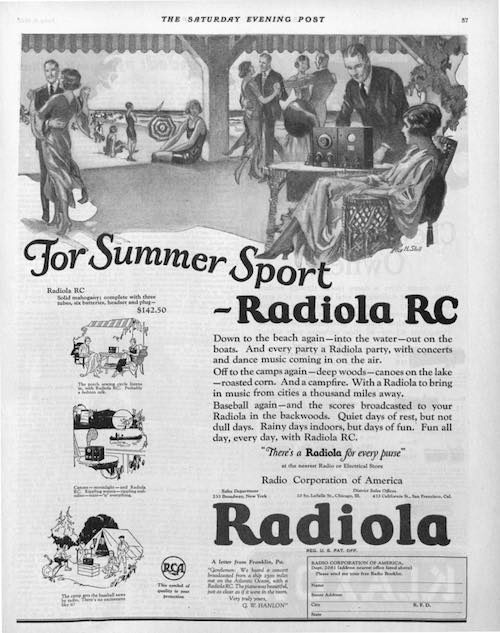
Click to Enlarge

Click to Enlarge
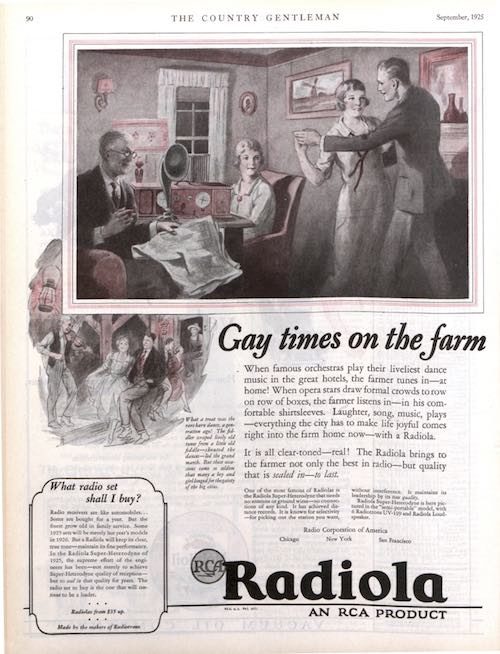
Click to Enlarge

Click to Enlarge

Click to Enlarge

Click to Enlarge

Click to Enlarge

Click to Enlarge
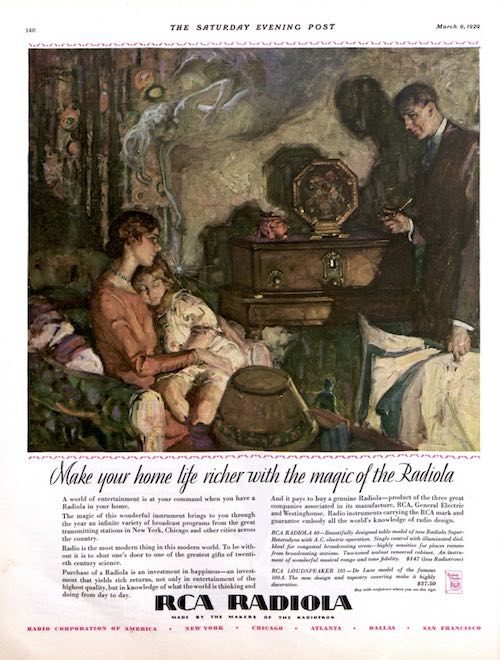
Click to Enlarge
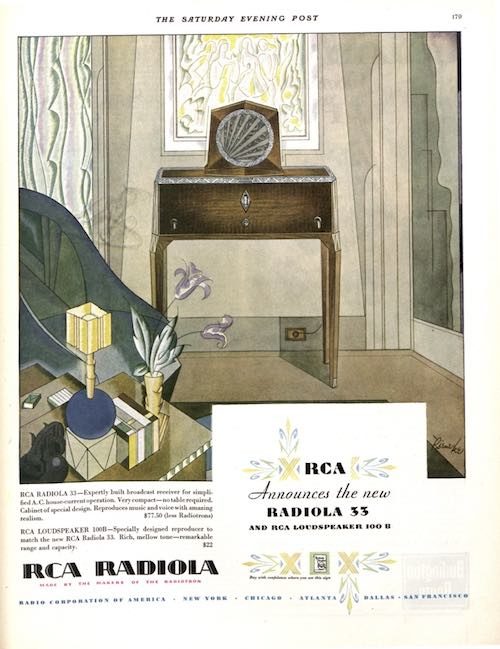
Click to Enlarge
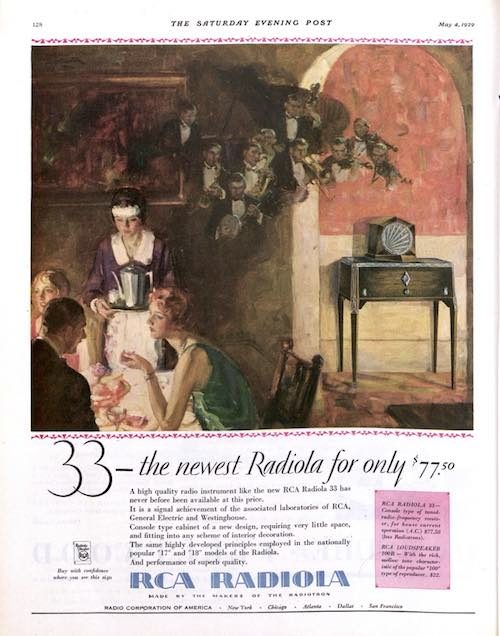
Click to Enlarge
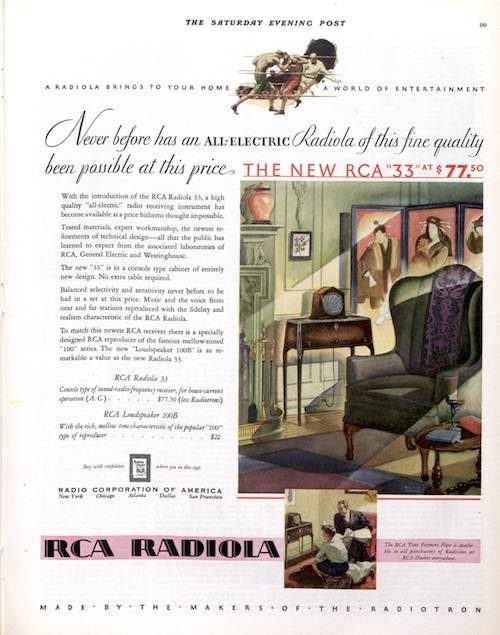
Click to Enlarge

Click to Enlarge
Become a Saturday Evening Post member and enjoy unlimited access. Subscribe now



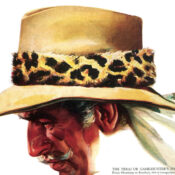

Comments
I have a 1928 RCA Radiola VE7-26X model. I am wanting to find a copy of an add with a picture of it in the ad.
These RCA ads are fascinating. Thank you for the enlarge option to read the ad copy. I was surprised headsets were around in the early 20’s. The technology of those times was at least as advanced (for then) as what we have now is for this time, if not more so. For being 90+ years ago? I can absolutely say that!
The artwork also was beautiful, black & white and color. It’s interesting to see both the more traditional art and the incoming art deco style used in the four 1929 ads.